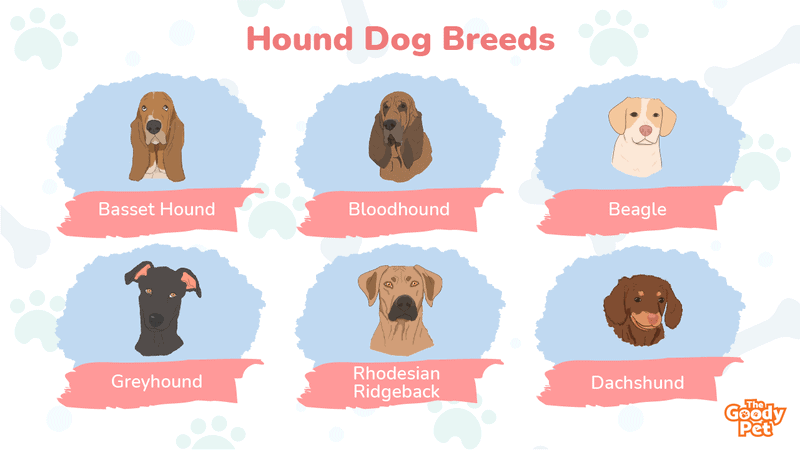Whether you’re a dog lover or not, you have to admit that there is something special about hound dogs.
Bred for hunting and tracking, these versatile dogs come in a variety of shapes and sizes, making them perfect for any household. From the lesser-known Griffon Nivernais, Grand Anglo-Français, to the popular basset hound and beagle, these hound dogs are here to stay.
In this post, we’ll take a look at 51 different hound dog breeds, including one that is sure to make your heart melt. Keep reading to learn more!
51. Basset Hound
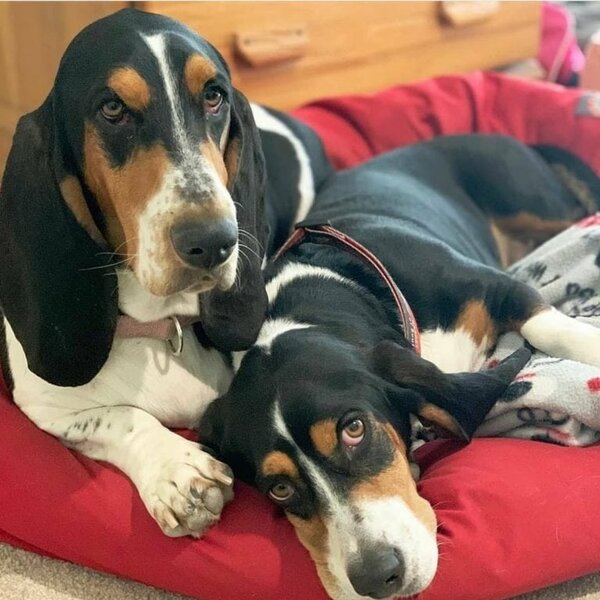
Basset Hounds are arguably the most popular dogs in the hound breeds group. They may not look like much in terms of intimidation and ferocity but these are some of the most effective hunting dogs.
Their scent tracking abilities are the main reason why they were and are still so popular in that line of work. However, they also have impressive endurance and unwavering focus on the specific task of stalking the prey.
50. Bloodhound
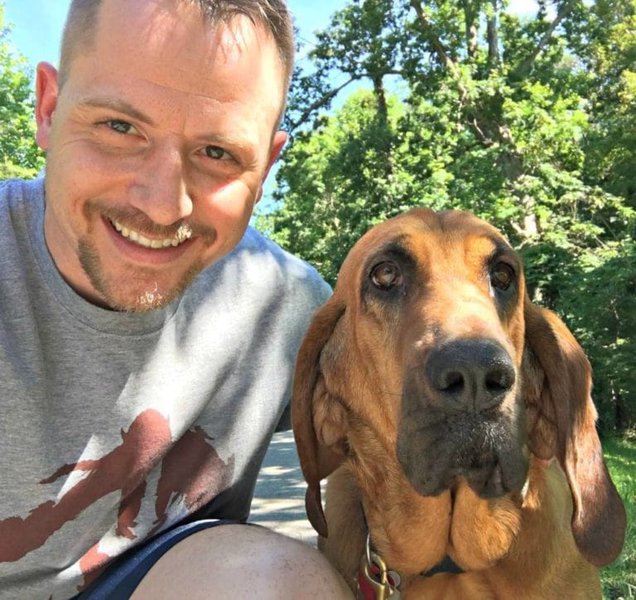
The basset hound may be a talented scent tracker but its nose has nothing on the bloodhound which is widely considered the best breed in terms of sense of smell.
In the past, they were used primarily as hunting dogs helping hunters keep track of animals like deer and wild boars. In the past few centuries, they have taken on other roles, the most notable being their use in tracking fugitives and missing people.
49. Beagle
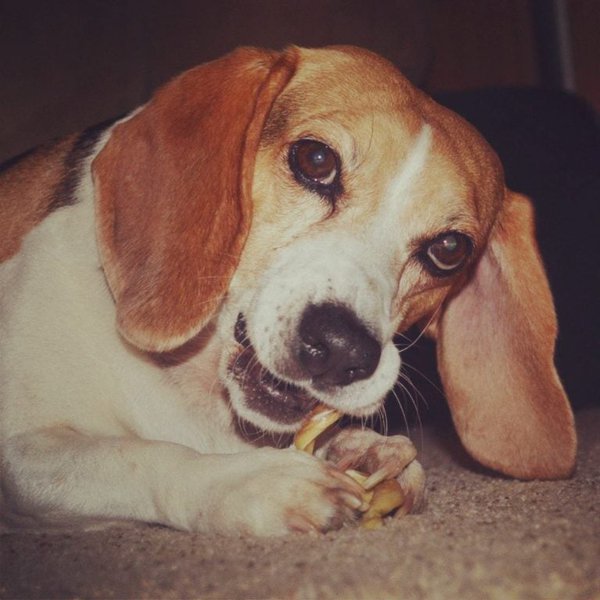
Today, beagles are rarely used for their hound dog skills. However, this does not mean that their natural talents are completely lost.
Many owners will notice traits like their stubborn focus on the weirdest little things. They may also occasionally attack small house pets including cats and rabbits.
Other than that, they are fantastic family pets. They get along with children as well as strangers and are generally very easy to live with.
48. Greyhound
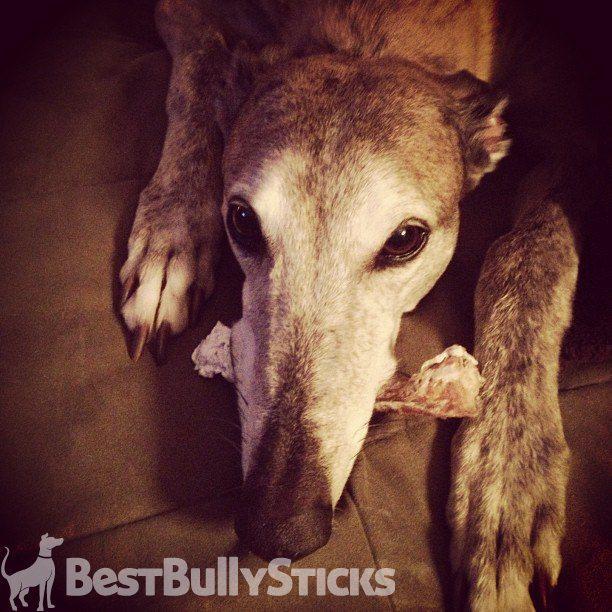
The Greyhound is considered the fastest dog breed on the planet. It can reach speeds of up to 44.7 miles per hour or 72 kilometers per hour. For some perspective, a vehicle traveling reasonably fast on a highway reaches speeds of 80 to 90 kilometers per hour.
This speed plus their focused mindset is exactly what made them such popular hunting dogs. Today, they are mainly kept as racing dogs and later retired as companion pets.
47. Dachshund
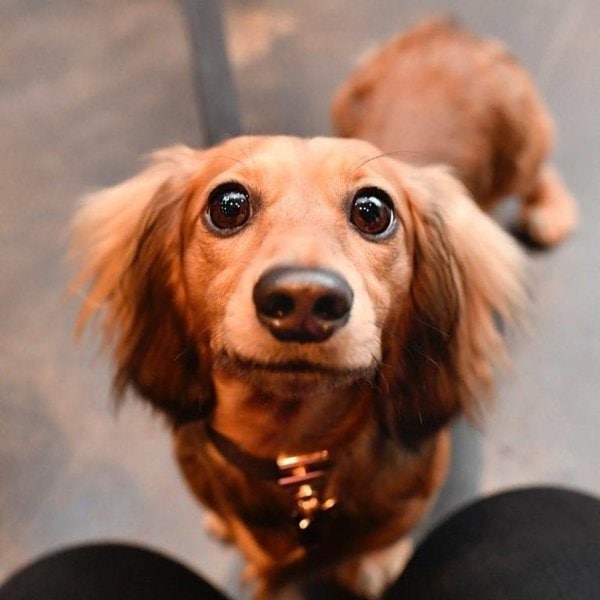
Doxies are known and loved for their disproportionate build which earned them the very accurate title of sausage dogs. Whether or not you like the weird aesthetic, there is no denying the fact that their very specific build made them very handy hunting dogs.
They were actually used to hunt small animals that hid in burrows or bushes. Their small bodies allowed them to maneuver into tight spots that regular hounds couldn’t. Their strong, stubby front paws also came in handy if any digging was needed.
46. Afghan Hound
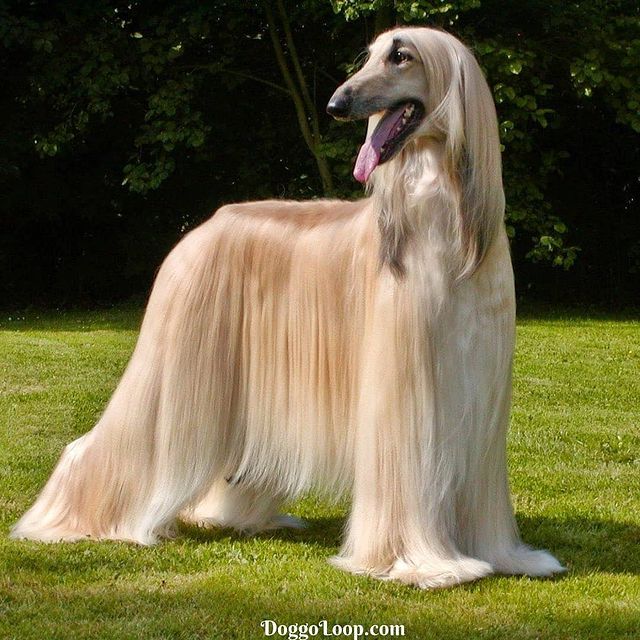
Afghan hounds have been named the dumbest dog breed there is. This is mainly because of how difficult they generally are to train. They are not very responsive and it may be very difficult to get their attention for a productive training session.
In their defense, these breeds are not dumb in the sense that their IQ is low. They were just not bred for companionship. Their hunting history has made them very single-minded and stubborn which means a ton of patience is needed to really tame them.
45. Black And Tan Coonhound
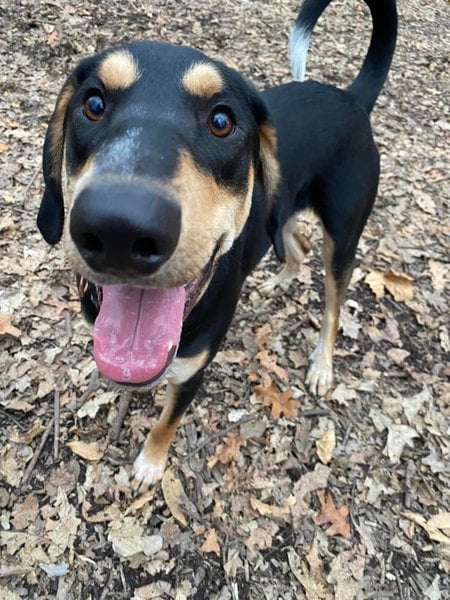
This is a crossbreed between two of the most talented hunting dogs: the bloodhound and the black and tan Virginia Foxhound. The mix combines the excellent scent tracking skills of the former with the speed and endurance of the latter for one of the most effective hound breeds.
Outside is where these breeds feel most at home as they are very independent and athletic. They may be standoffish even with their family members which make investing in bonding time super important.
44. Irish Wolfhound
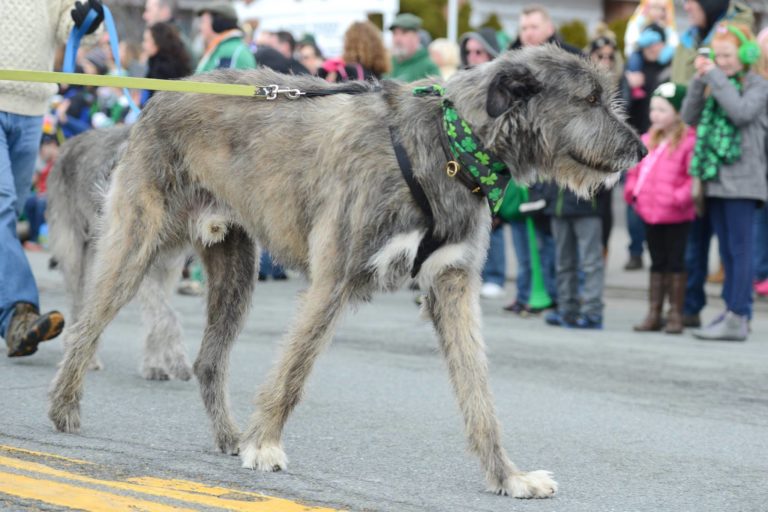
This is one of the oldest hounds on our list. They were actually super popular in Ancient Rome where they were used to hunt all sorts of wild beasts from lions to bears.
Their history in Ireland is just as impressive where the fluffy hounds went up against formidable opponents like wolves and actually held their own.
Today, very few purebred Irish Wolfhounds exist outside their native homeland. But for people who have had the pleasure of living with them, understand that these are some of the most easy-going companions you can have.
43. Whippet
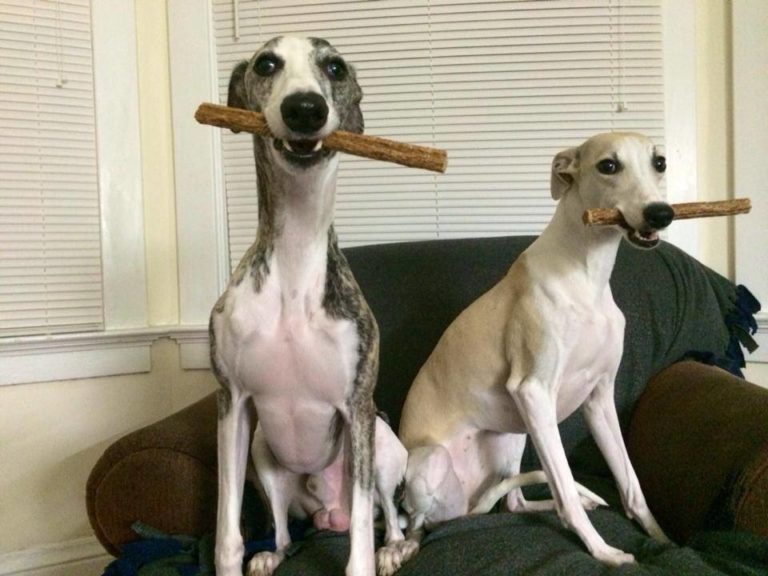
The Whippet is an incredibly athletic breed. They are known for their incredible speed, agility, and endurance. Like their ancestors the Greyhounds, these pups are now very popular in dog racing circles.
What may come as a surprise is how lowkey lazy these pooches are. In fact, if they can get away with it they will spend all their time napping and just lazing about. So if you want a nap buddy that you can also go out and have fun with then this is without a doubt the perfect breed for you.
42. American Foxhound
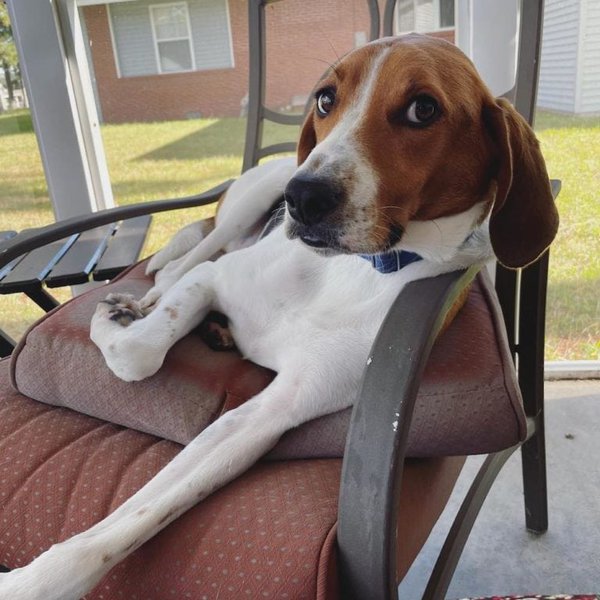
All you need to know about this hound’s history is in their name. They were developed in the United States of America to hunt foxes. However, there is so much more to them than this.
As with any other hunting dog, American Foxhounds are very single-minded and stubborn which is a part of their charm. However, this specific breed is known to be more yielding, especially with patience and consistency.
41. Pharaoh Hound
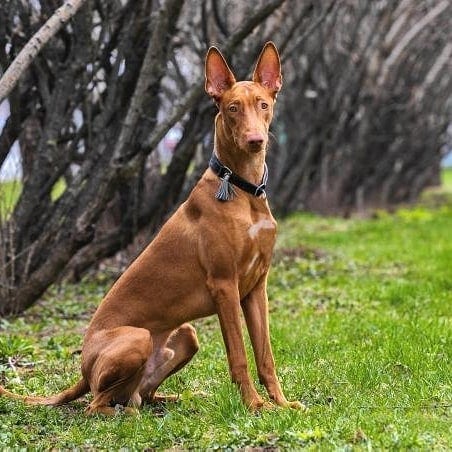
This is the national dog of Malta where it is locally referred to as the Kelb tal-Fenek.
Something really cool about them is their possible relation to Ancient Egyptian dynasties. They are actually thought to be the actual dogs painted on pyramid walls or at least the descendants of the same.
Unfortunately, this is a very rare dog with handfuls in different parts of the world including the UK, Mediterranean region, and the United States.
40. Ibizan Hound
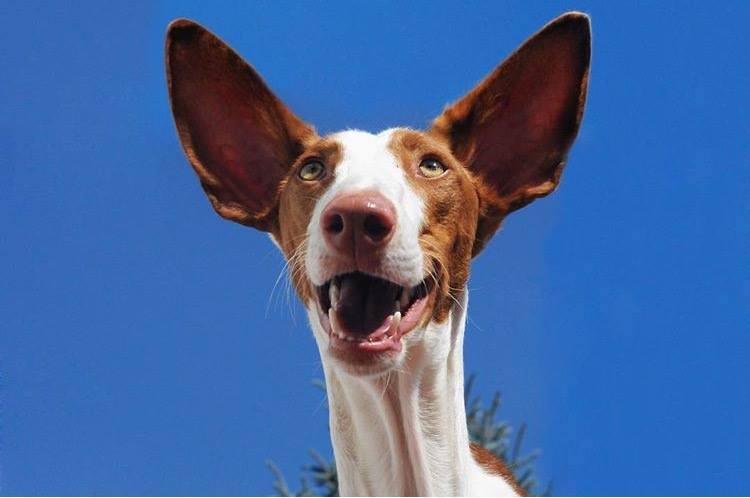
This is quite a versatile dog. Given their hunting history, they are very comfortable outdoors. They love high-intensity exercises that let them use their speed and agility.
On the other hand, they have a closeted couch potato side that comes out when they are very comfortable and feel safe with their human families.
They also tend to be very friendly with strangers and tolerant with kids but can also easily be trained as barking watchdogs.
39. Rhodesian Ridgeback
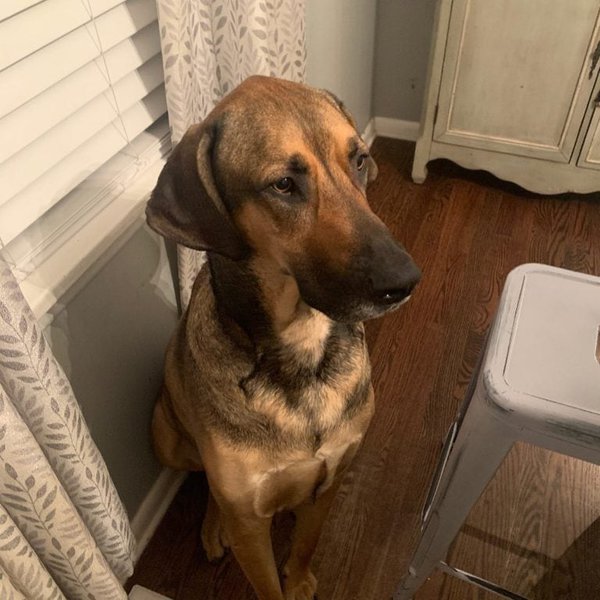
One of the most interesting rumors propagated about the Rhodesian Ridgeback is that these dogs can actually kill lions. This is not entirely factual.
There is no denying the fact that this hound is a formidable beast with averages of 80 to 100 lbs in weight and 24 to 31 inches in height. They are also very brave and have intimidating personalities when they are defensive.
However, they rarely, if ever, attacked lions but instead intimidated them by barking and charging thus cornering them for their human owners.
38. Borzoi
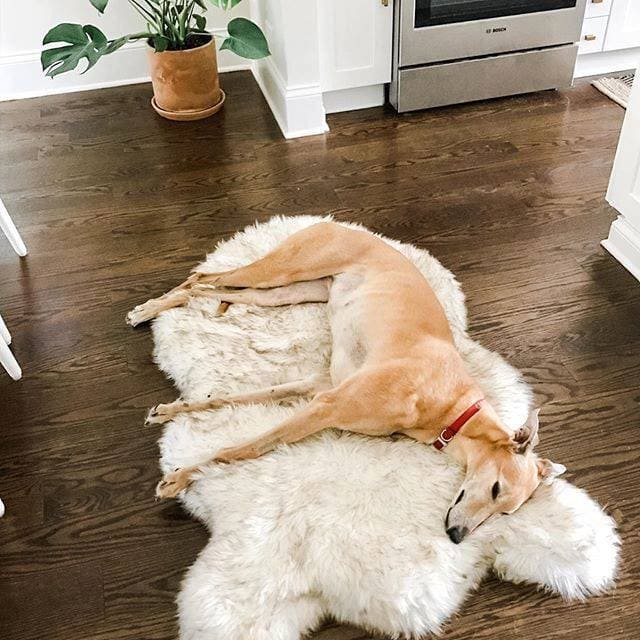
The Borzoi is also known as the Russian Wolfhound. This is a weird-looking dog with its narrow head, elongated snout, and lanky frame that is disproportionately large compared to its head.
As with the doxie breed, the Borzoi’s odd aesthetic is what made it such a fantastic hunting dog. It made them more streamlined and therefore faster despite their bulky coats and muscle bulk.
Despite being relatively rare, the Borzoi is one of the most significant hounds in pop culture history with mentions and appearances in everything from the iconic novel “War and Peace” to movies like “102 Dalmatians” and “Lady and the Tramp”.
37. English Foxhound
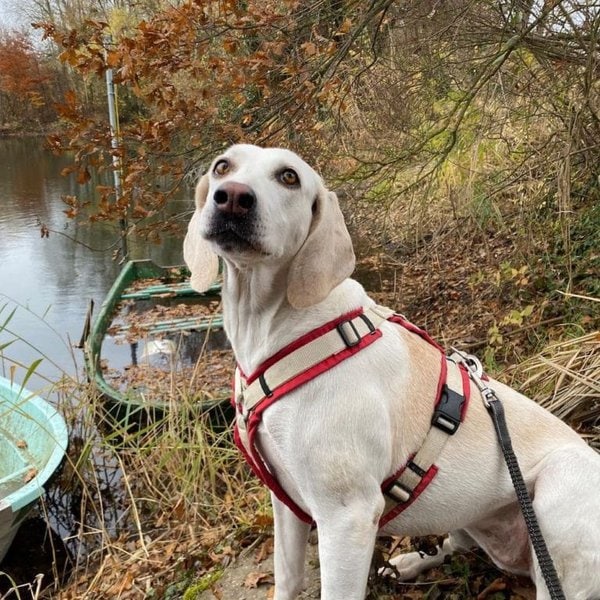
This is the UK cousin to the better-known American Foxhound. They are quite similar in terms of aesthetics. However, the English Foxhound is stockier and can reach slightly higher height averages.
They may not be as agile as their cross-Atlantic relatives but English Foxhounds are very resilient.
Another major difference that sets this hound apart from other foxhounds is the fact that it is super friendly even with strangers and is relatively easier to train.
36. Basenji
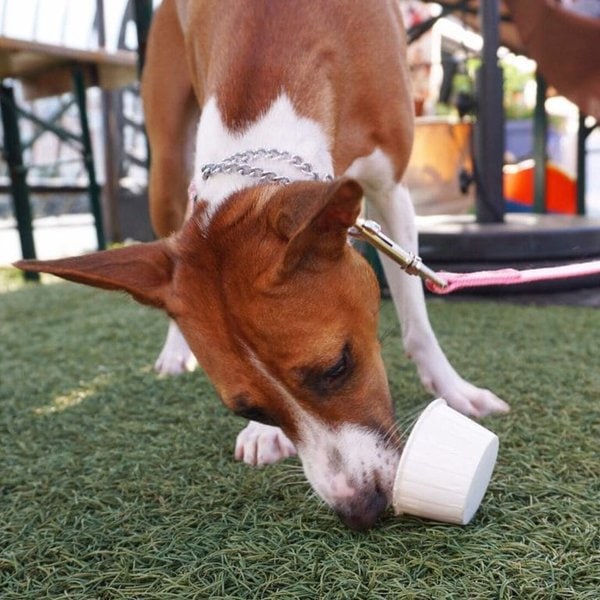
The Basenji is truly a dream dog in many ways.
First off, these pups are really easy on the eyes. They have an elegant aesthetic due to the combination of their proportional build and their short, smooth coat.
Speaking of the coat, the second reason why this hound is such an awesome dog is the fact that it is hypoallergenic. The minimal shedding also minimizes their grooming needs.
What is probably the best part is the fact that these dogs are very quiet. In fact, they never bark at all.
35. Petit Basset Griffon Vendéen
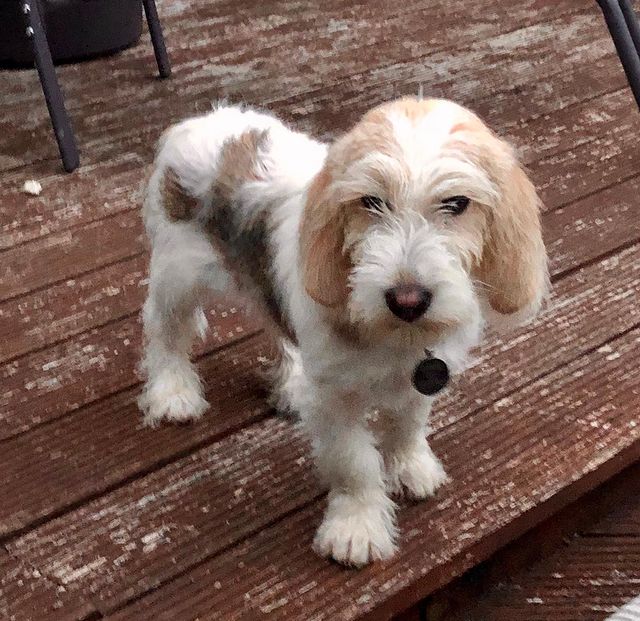
That name is quite the mouthful so let’s just refer to them by their standard short form which is PBGV.
These small fluff balls are known for their excellent scent tracking skills. However, guiding their human friends to the prey is about as much as they did.
They are generally harmless little dogs that will do nothing more than yap your ears off if bark training is not done right.
34. Thai Ridgeback
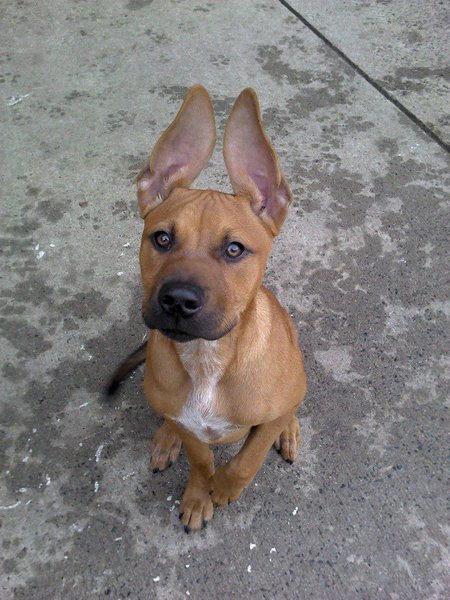
The Thai and Rhodesian Ridgebacks may have similar hunting pasts as well as last names as a result of the characteristic ridge but that is just about it as far as similarities go.
The Thai Ridgeback’s domestic history is not very long. As a result, the very independent breed is very difficult to house train as they would much rather spend their time outdoors.
Though a little disappointing as companion pet, the Thai Ridgeback is one of the most impressive hunting breeds with its speed, agility, and sharp senses.
33. Bluetick Coonhound
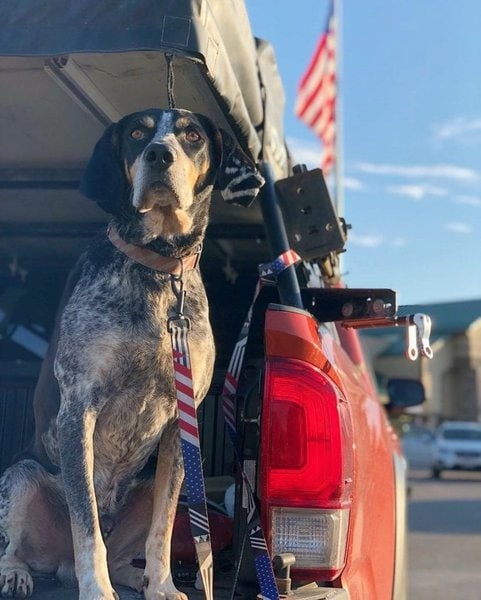
Bluetick Coonhounds are named that due to their unique “blue tick” coat color type. This features a dark blue base with black spots of different sizes distributed mainly over the torso and limbs.
In addition to their unique aesthetic, these dogs are known for being particularly stubborn. Yes, all hounds are stubborn when they focus on something. However, this breed takes things to the next level and may even lash out if you keep persisting.
32. Plott Hound
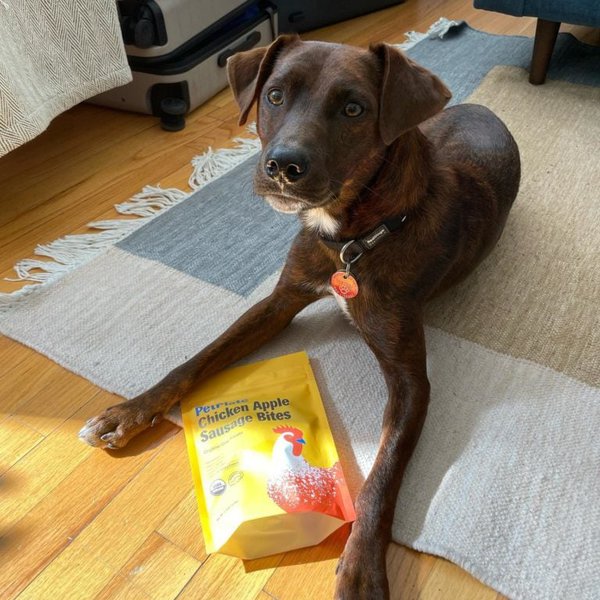
The Plott Hound can be traced back to Germany but has become quite popular in the United States. It is actually North Carolina’s state dog.
They are very popular in law enforcement where they are used for tracking. This is due to their strong scent tracking abilities that they inherited from their direct ancestors the bloodhound.
As companion pets, Plott Hounds can be quite a handful and are best left for experienced dog owners.
31. Harrier
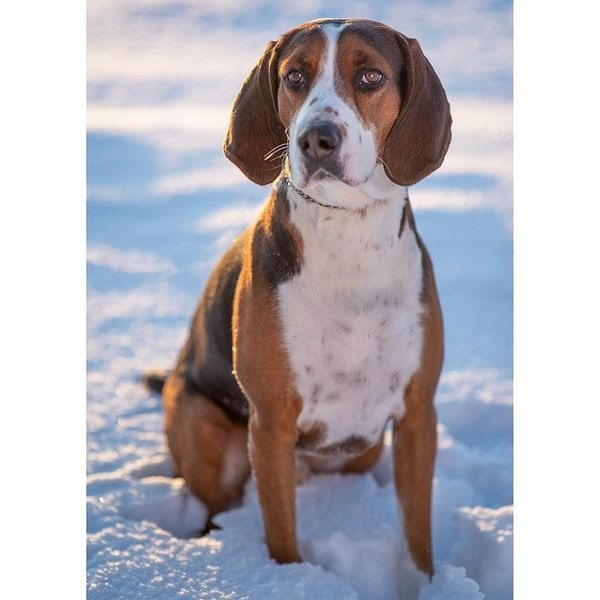
As with a few other entries on our list, this is an athletic dog with a lazy side. They are quite adaptable and often go with the vibe of the owner. If you train it to be active then it is you who will have to work to keep up.
However, if you train them to be big cuddle bugs then that is exactly what they will do. With this, however, there is always the risk of the dog becoming obese. Therefore, make sure to invest in regular playtime and watch how much the ravenous little beasts chow down.
30. Otterhound
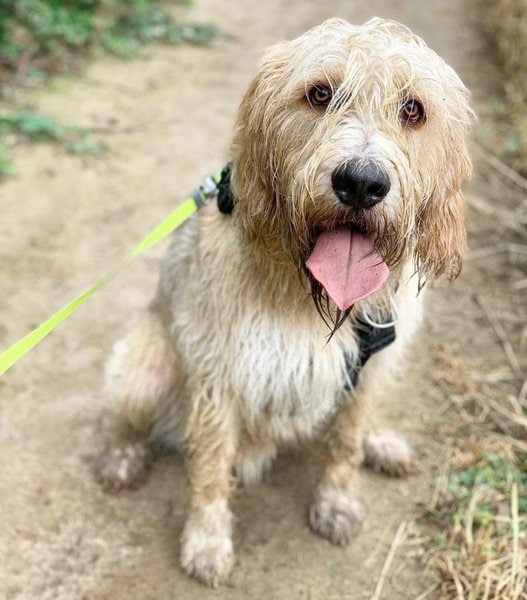
The Otterhound was once one of the most popular hunting dog breeds in Europe with roots as far back as the Medieval period. They were favored for their traits including their speed, tracking skills, resilience, intelligence, and fearlessness all of which made them a versatile hunting breed.
However, as hunting for both sport and survival becomes less mainstream, their demand has seen a steady decline. In fact, there are so few purebred Otterhounds today that they are considered vulnerable breeds.
29. Saluki
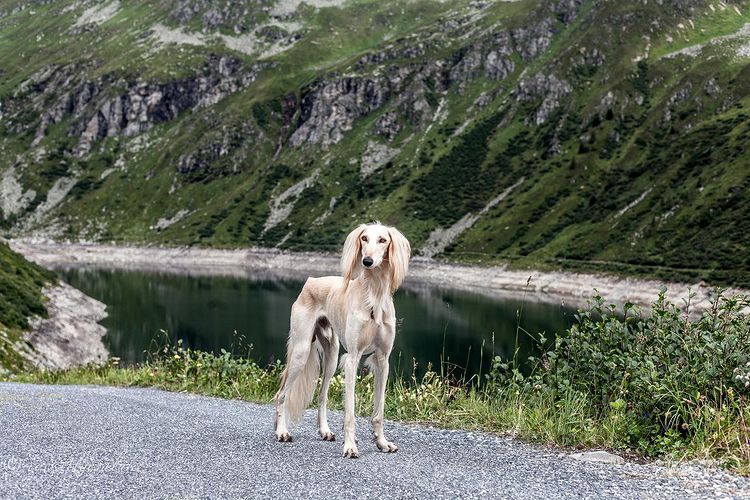
The Saluki is a delicate-looking breed with its elegant form and beautiful, hairy ears. However, do not let the heart-melting beauty fool you. These are a real force to be reckoned with as far as hunting is concerned.
What sets this hound apart from most other trackers on our list is the fact that they relied mainly on their incredible sight. They are also quite fast and are second only to the Greyhound with their speed maximum of 68 kilometers per hour or 42.2 miles per hour.
28. Redbone Coonhound
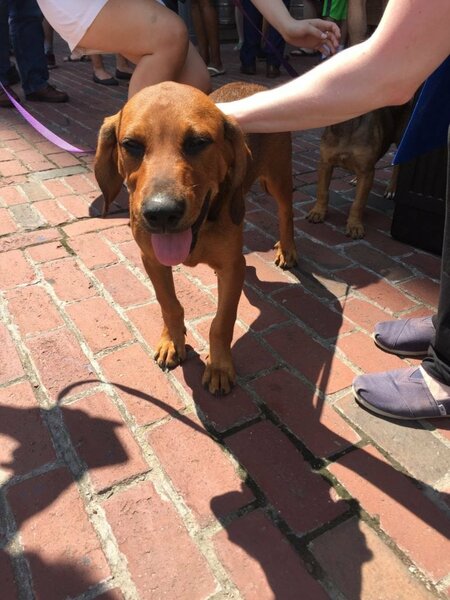
There are two standout facts about the Redbone Coonhound that every potential owner should know about.
The first is that these pups are relatively easy to train. Unlike many other hunting hounds, the Redbone Coonhound is very eager to please and quite responsive. With consistency and effective training methods, you should have your pooch house trained and learning fun skills in no time.
They also tend to stink a lot. This is their natural musk produced as part of their pack mentality to keep track of other coonhounds and can be controlled by regular baths and deodorizing.
27. Scottish Deerhound
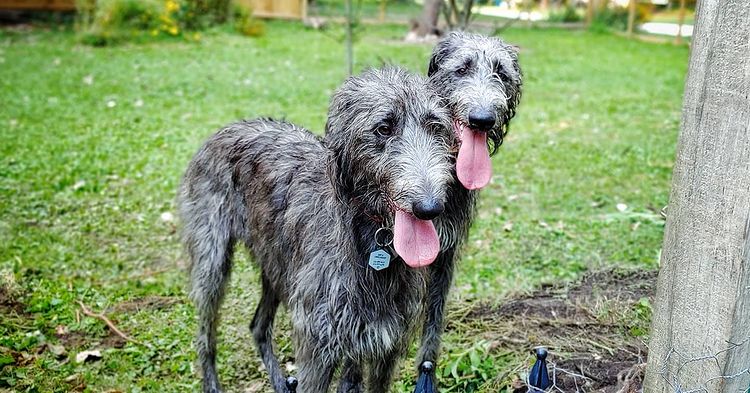
The Scottish Deerhound is one of the ancestors of the Irish Wolfhound which is why they look so similar at first glance.
However, the Scottish native breed is slightly larger with a more muscular build. Their speed and endurance were used to help with hunting fast escaping prey like deer and hares.
These skills also made them very popular in dog racing circles which is where you will find most Scottish Deerhound dogs today.
26. Portuguese Podengo
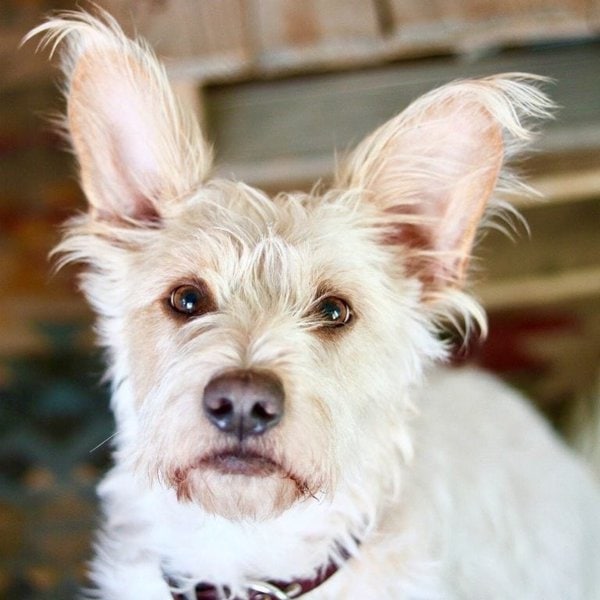
While most hounds on our list have seamlessly transitioned into life as companion pets, the Portuguese Podengo continues to hold on to its independence and wild side. This is definitely not a dog for a starter pet parent as it needs a lot of firm training, unwavering displays of strength, and patience that only experienced dog owners can give.
These dogs also do not like to be cooped up indoors for too long and will lash out due to frustration if not allowed free outdoor access.
25. Treeing Walker Coonhound
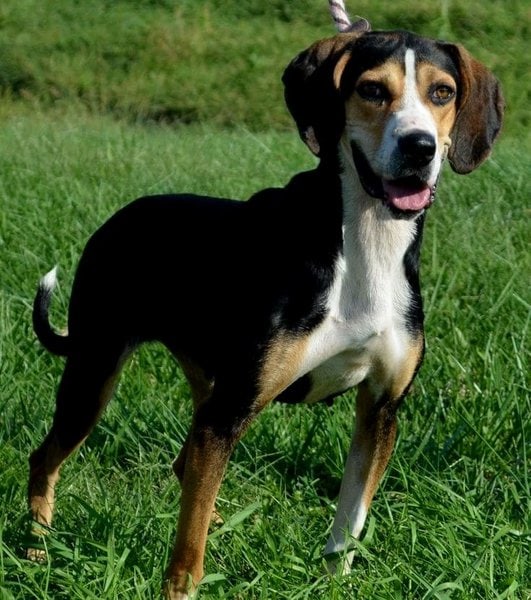
Treeing Walker Coonhounds are infamous for their high-maintenance nature. They are athletic, energetic, and outdoorsy and therefore need a lot of time invested to keep them physically stimulated.
Experts actually recommend 2 hours or more of physical activity and playtime every day. The best way to do this on a time crunch is to give them access to the outdoors as the independent pooches will often keep themselves entertained.
They also need a lot of grooming care. Regular baths will help minimize their natural musk while grooming helps you manage their moderate to high shedding.
24. Cirneco dell’Etna
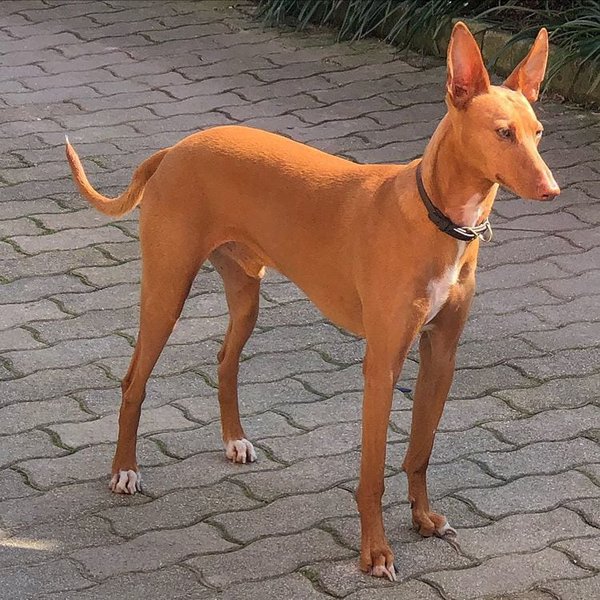
The Cirneco dell’Etna is one of the rarest dog hounds today despite its rich history as a popular hound dog in the Mediterranean region.
Today, most of them are found in Sicily where they are kept as everything from sports dogs and hunting assistants to guard dogs and companion pets.
Aesthetically, they are very similar to their close relatives the Pharaoh Hounds but tend to be smaller and therefore more agile.
23. American English Coonhound
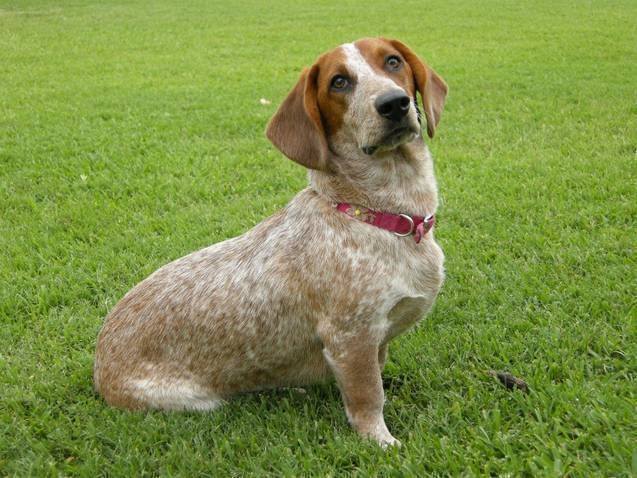
This is also known as the Redtick Coonhound for its unique Redtick coat marking pattern. As with the bluetick pattern, the markings feature a combination of a single base coat color and spotting by a secondary color.
In this case, the base is usually white with red or lemon spots all over the torso and limbs as well as parts of the face.
Other than that, it is just like any other coonhound with its spirited nature and athletic prowess.
22. Hanover Hound
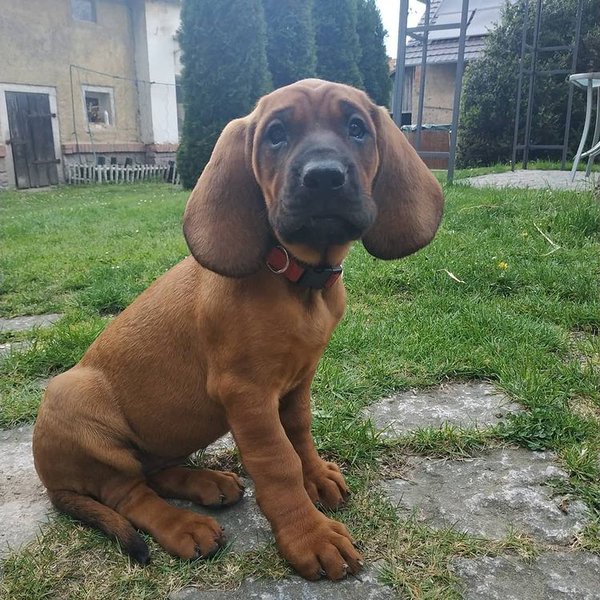
This is a direct descendant of early forms of the bloodhound. They are particularly popular in France with very few found elsewhere in the world.
These dogs have a fantastic sense of smell and are still used today for tracking both by sport hunters and law enforcement.
They are also sometimes kept as companion pets, but their dominating personality and predisposition to aggressive outbursts require experience to handle safely.
21. Bavarian Mountain Hound
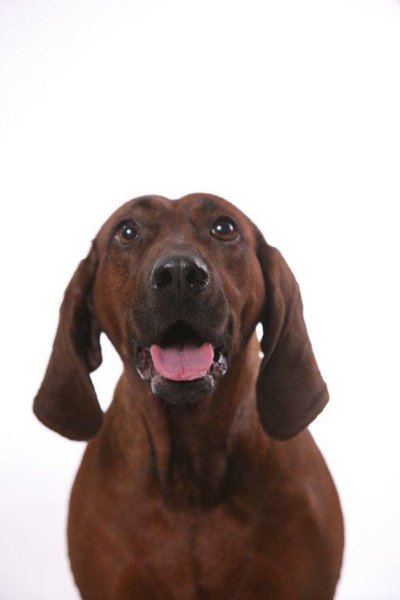
The Bavarian Mountain Hound’s strongest hunting traits are its strong sense of smell as well as its endurance. They are also quite powerful and intimidating which came in handy when cornering prey.
However, they are not very fast or agile. Despite their below-average athleticism, they are still very popular as outdoor breeds which is where they are happiest and most comfortable. If they are kept indoors, they tend to get frustrated and may either lash out or show signs of depression.
20. Transylvanian Hound
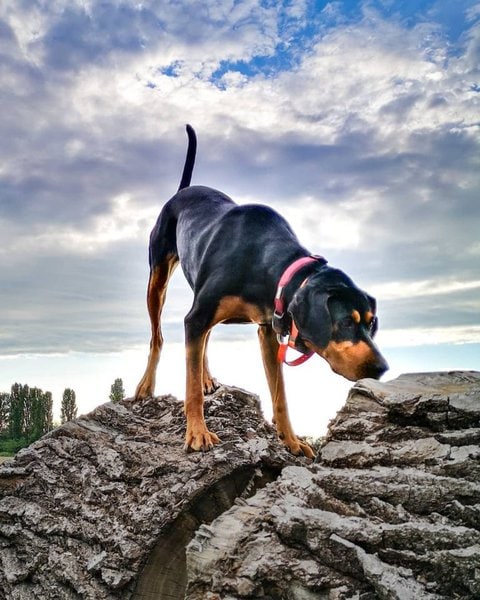
There was a time when these dogs were the crème of the crop and preferred as hunting assistance by noblemen in ancient European civilizations including The Kingdom of Hungary.
Their strong sense of smell and excellent pointing skills as well as their intimidating build made them perfect for hunting large animals including bison and bears.
Their numbers have dwindled out in the past few centuries. Today, most of them are kept as guard dogs for their alert nature and wariness towards strangers.
19. Hamilton Hound
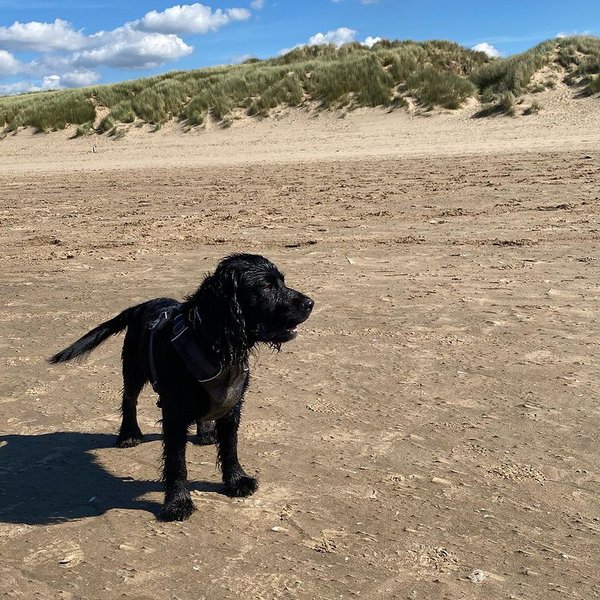
The Hamilton Hound is a melting pot of hound breeds developed by combining a variety of hunting dogs including English Foxhounds, German Hounds, and Harriers.
This gave the Hamilton Hound the best of these breeds including speed, unmatched endurance, scent tracking, and what they are best known for which is their single-mindedness when it comes to following prey.
While all these features make them ideal for outdoor work, Hamilton Hounds are desperately unhappy when left cooped up in restricted spaces like small apartments with no yard access.
18. Basset Fauve de Bretagne
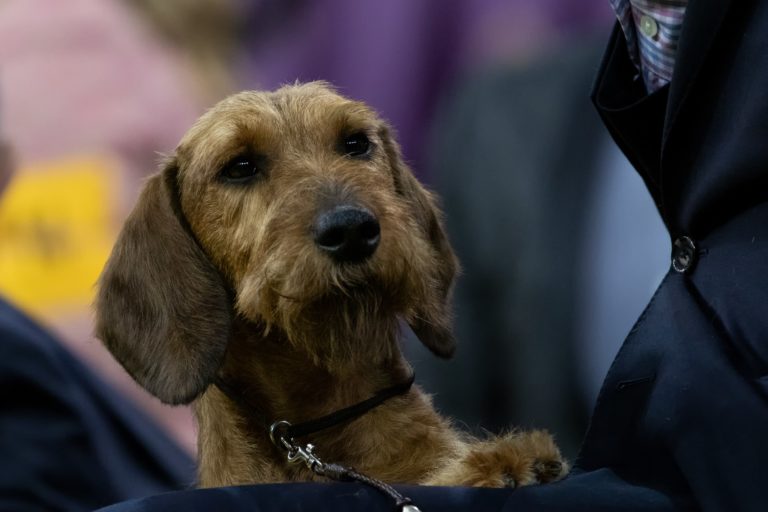
Quite frankly, there is nothing particularly special about this breed other than its mouthful of a name. It is pretty decent in terms of tracking. Its build also allows it for use in burrowing or navigating thick shrubbery for hunting small game-like hare.
Unfortunately, their lack of outstanding quality has led to a decrease in their demand which in turn has landed them a spot on the much dreaded endangered breeds list.
17. Drever
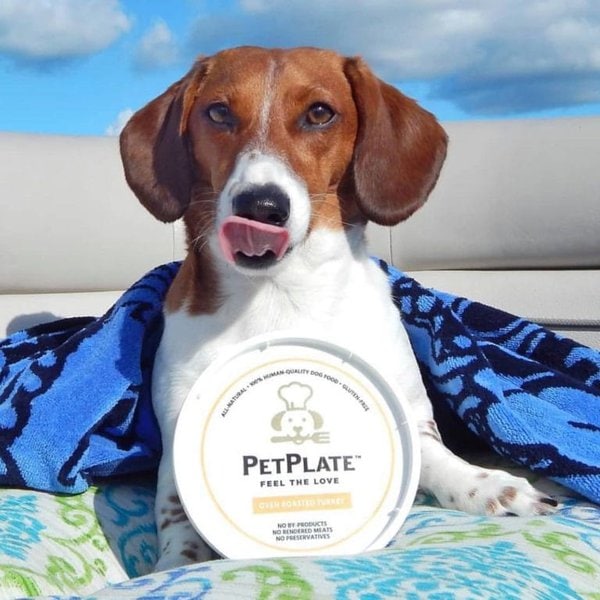
This is another super rare breed on the brink of critical endangerment. They are built much like the Dachshunds with long torsos and disproportionately small limbs. However, the disproportion is not as exaggerated as what you will find in doxies.
Nevertheless, this build makes them just as effective when it comes to hunting small game including young foxes and hares.
Unlike most breeds on our list, the Drever is not commonly kept as a companion pet and when it is, a lot of patience is required to deal with the unruly pooch.
16. Catahoula Leopard Dog
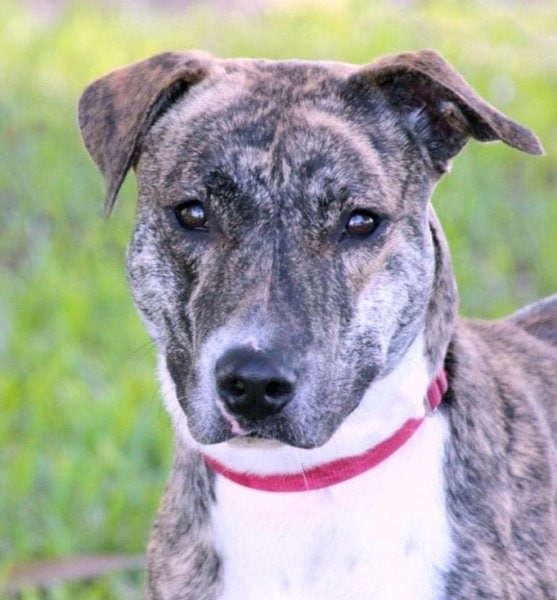
Whoever came up with the Leopard Dog part of this pooch’s name definitely didn’t get it wrong. With their spotted coats these really are the canine versions of the famous big cat.
One of the coolest features of these dogs is their heterochromia. This is where the eyes are two different colors. This is associated with coat marking mutations responsible for their Leopard spotting appearance.
In addition to their use as tracking dogs in hunting, these hounds are also excellent at herding with their firm control approach.
15. Sloughi
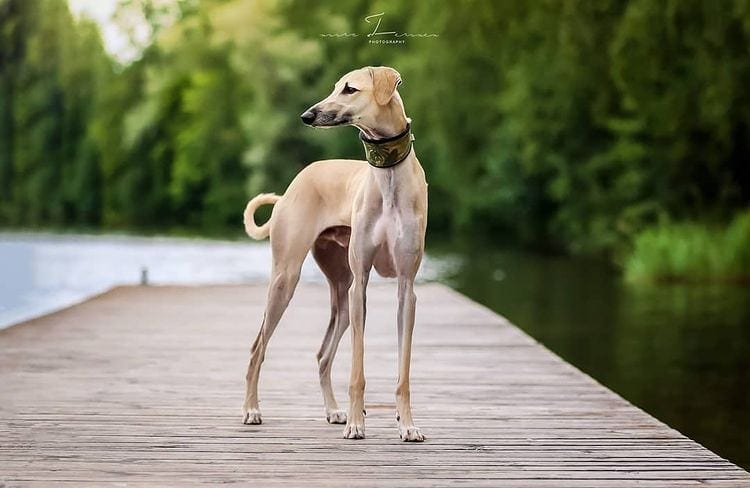
This is yet another Mediterranean star known for its combination of speed, agility, and sharp tracking senses for the perfect hunting companion.
Like their comrades, Sloughi hounds are best known for their excellent eyesight. This made them very popular with hunting in thick vegetation or tracking small animals that may have been hard for human handlers to spot.
They are also commonly used as guard dogs and can be trained to be very aggressive.
14. Grand Basset Griffon Vendéen
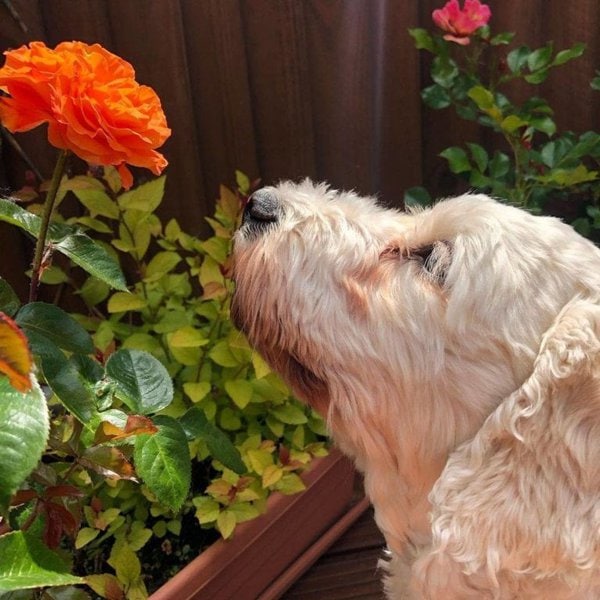
The GBGV may not look like other speedy hounds but it is a very fast and flexible breed. This made it a formidable opponent against other small and speedy prey, especially rabbits.
Due to their history of use in packs and their close interactions with human handlers, these canine pups are very easy to live with. They tend to get along with everyone including strangers and may not be the best guard dogs.
13. Azawakh
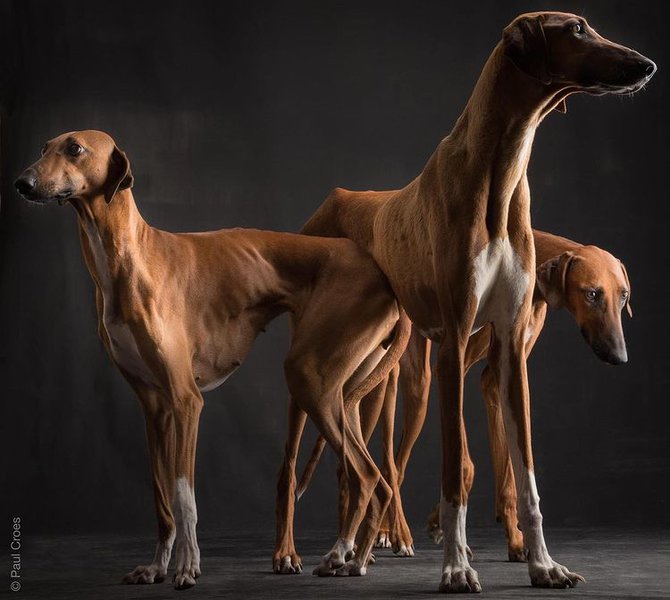
This breed is almost impossible to distinguish from the likes of the Whippet and Greyhound with similar coat colors.
However, the Azawakh tends to be broader chested and more muscular. They are also almost as fast as the two distant relatives and can reach maximum speeds of up to 64 kilometers per hour or 40 miles per hour.
Where they stand out the most is in their resilience to hot weather which has a lot to do with their history in West Africa’s hot equatorial climate.
12. Italian Greyhound
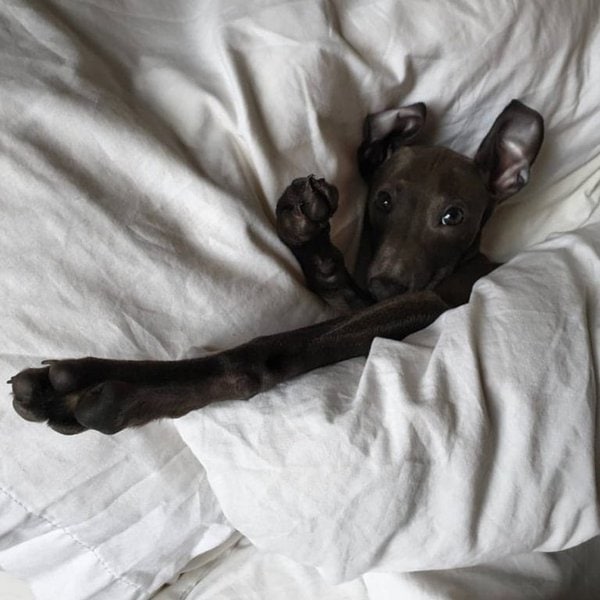
The Italian Greyhound is yet another breed on our list with the perfect hound dog trifactor of speed, agility, and heightened senses. They are primarily sighthounds but also have excellent smell and hearing tracking skills.
It is the Italian Greyhound’s sweet personality, however, that makes it so popular these days. They can be quite shy and distant with strangers at first. However, when they warm up they are super affectionate and goofy and basically impossible to not love.
11. Austrian Black And Tan Hound
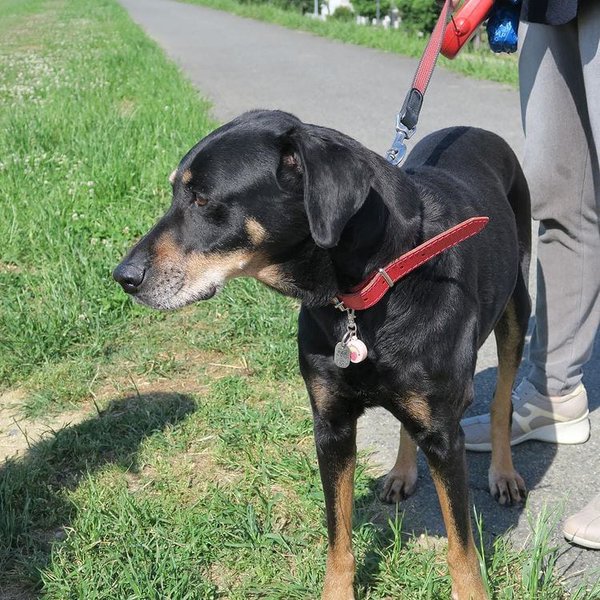
The Austrian Black and Tan Hound is a simple hound breed governed by very strict standard feature guidelines by kennel clubs all over the world. They have short, smooth coats of black fur that cover most of their body.
To qualify as Austrian Black and Tan Hounds, they must also have tan accents mainly found on the ends of their feet, ears, and lower jaw area.
10. Basset Artésien Normand
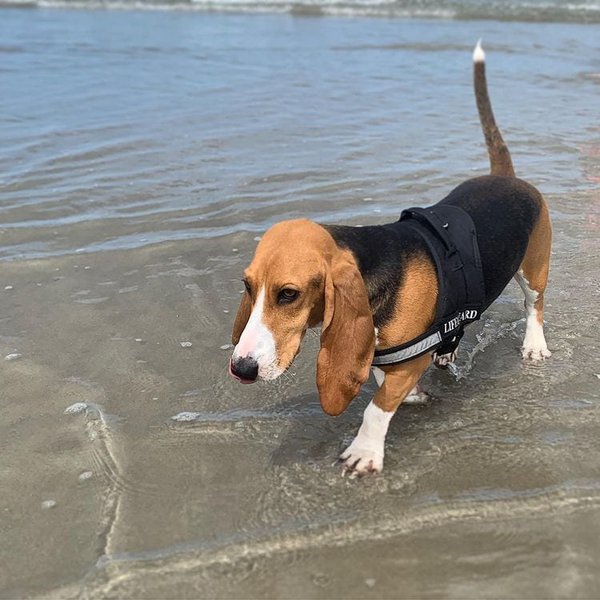
At first glance, you may not be able to tell the Basset Artésien Normand apart from a regular Basset Hound. This is because the two share common ancestors.
The Basset Artesien Normands, however, is more of a purebred line. This makes them much lighter and therefore faster and more agile than the Basset Hound. However, their sense of smell is not as fully developed as their expert tracker cousins.
Today, these dogs are very rare.
9. Great Gascony Blue
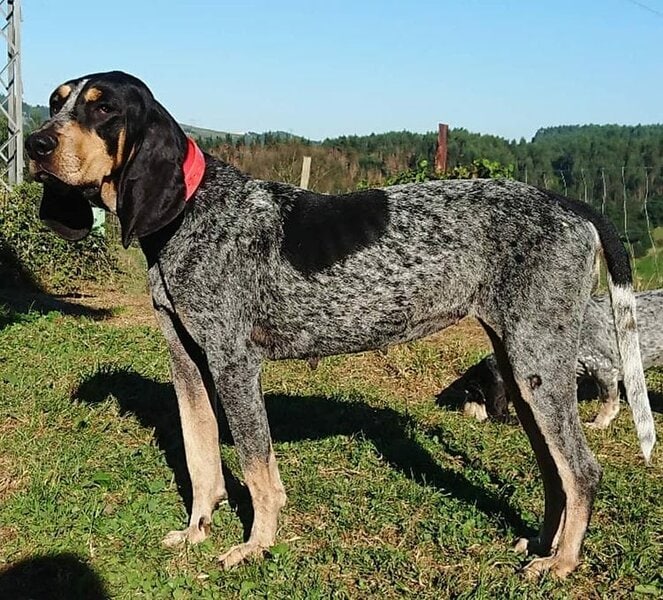
Another close resemblance on our list is between the Great Gascony Blue and the Bluetick Coonhound. This similarity is due to the fact that the Coonhound was developed from the Great Gascony breed.
The main difference is in terms of size. As the name suggests, the Great Gascony Blue is a very large breed. It averages about 80 to 100 lbs in weight and up to 28 inches in height.
8. Mudhol Hound
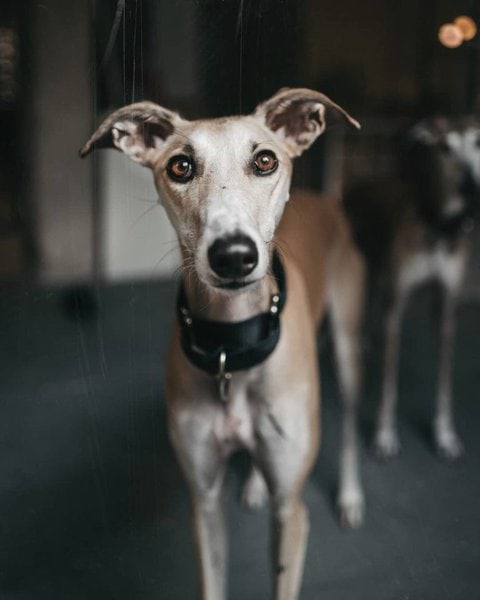
This sighthound is native to India. Like its relatives the Greyhound and Whippet, it is built for speed with its long, strong legs, narrow frame, and small, streamlined head.
In addition, to hunting, its sharp sight skills have in the past been put into use for surveillance both in the military and in personal protection as guard dogs.
They are rarely kept as companion pets and when they are, a lot of outdoor time is needed to keep them happy.
7. Black Mouth Cur
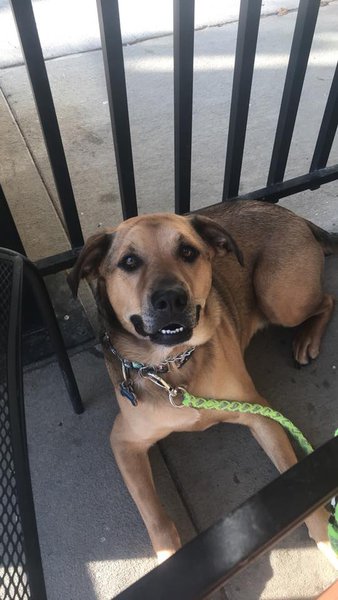
Technically speaking, the Black Mouth Cur is actually not primarily a hound. It was kept as a herding dog in the American southern states.
However, it is a very adaptable breed that has since been used for a variety of purposes including guarding homes and pulling carts.
It has also been used as a hunting dog. In this case, its agility and endurance were its strongest features.
6. Petit Bleu de Gascogne
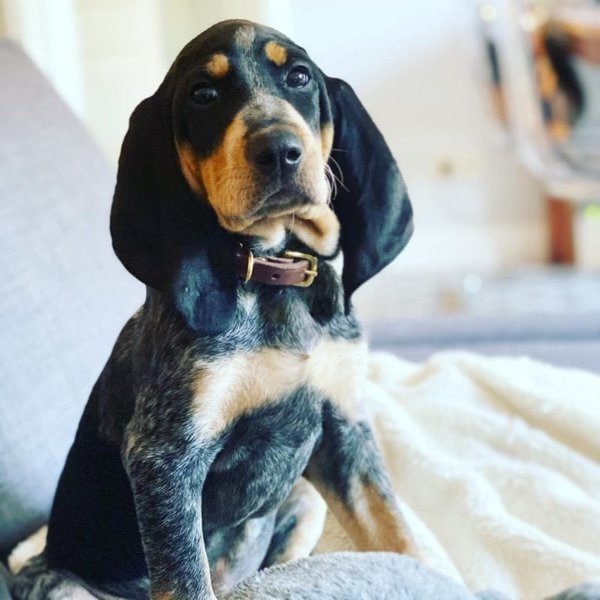
Contrary to popular misconception, the Petit Bleu de Gascogne is not actually the smaller version of the Grand Bleu de Gascogne. They are more or less the same size with only a few inches and a few tenths of a pound difference to some individual dogs.
The name actually comes from the fact that they were bred specifically to help catch smaller prey.
They are otherwise quite similar to the Grand Bleu variety in everything from abilities and health to personality.
5. Basset Bleu de Gascogne
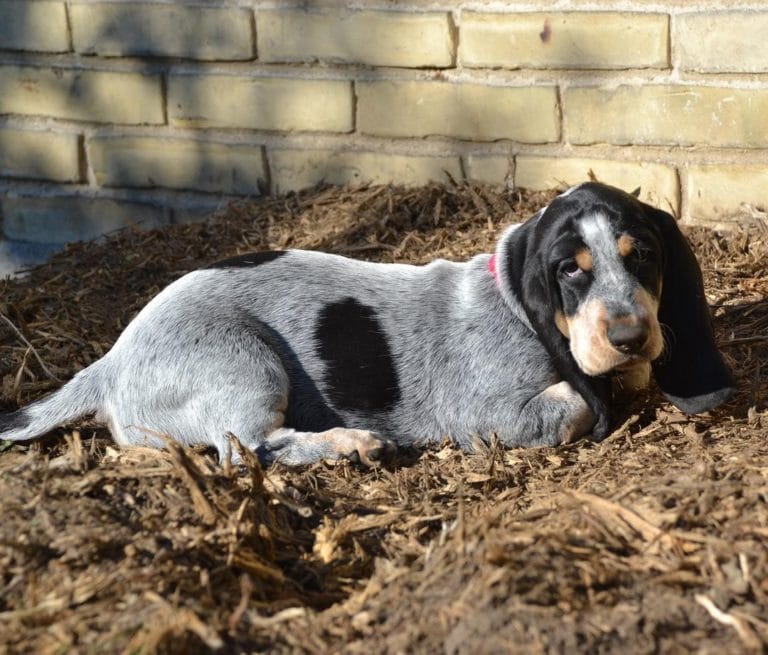
This is French for Blue Gascony Basset. As the name suggests, this spotted little hound is a part of the basset family of 6 with direct links to the Bleu de Gascogne heritage.
Whether or not this breed is standardized enough to hold its own as an independent entry is a greatly contested topic. This is why several kennel clubs have denied formal registration as a breed.
4. German Hound
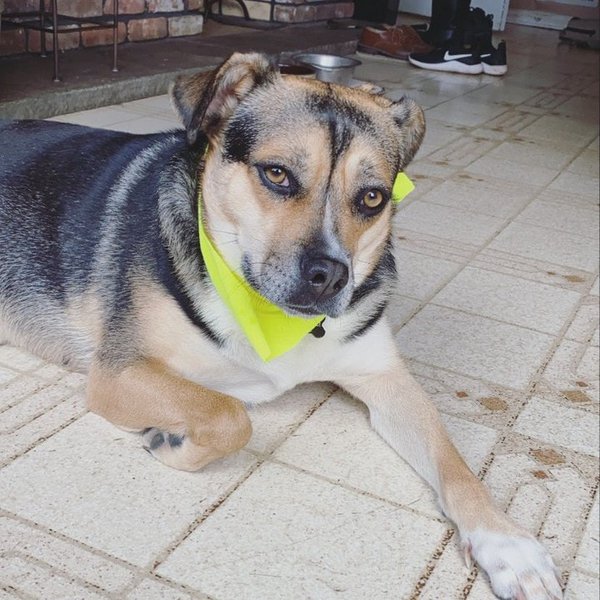
The German Hound is one of the oldest hunting dogs in west Europe and is closely related to many of the breeds that we have mentioned on our list of hounds.
These dogs are not very common outside Germany. In fact, many kennel clubs in Europe as well as the major North American clubs do not recognize it as an independent breed.
Despite this, it is an awesome pet worth considering as a family companion for its affectionate and playful nature.
3. Griffon Fauve de Bretagne
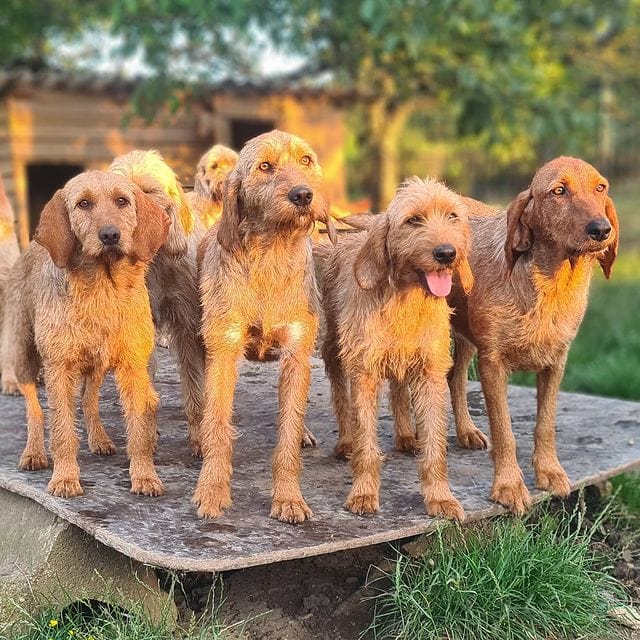
Based on looks alone, the Griffon Fauve de Bretagne may not appear built for the many awesome hunting feats that it is capable of. However, looks should not fool you as this is one of the most effective scent hounds there is.
They are particularly sharp at picking up blood scents when hunting wounded animals.
For the most part today, they are kept as family dogs.
2. Grand Anglo-Français Blanc et Noir
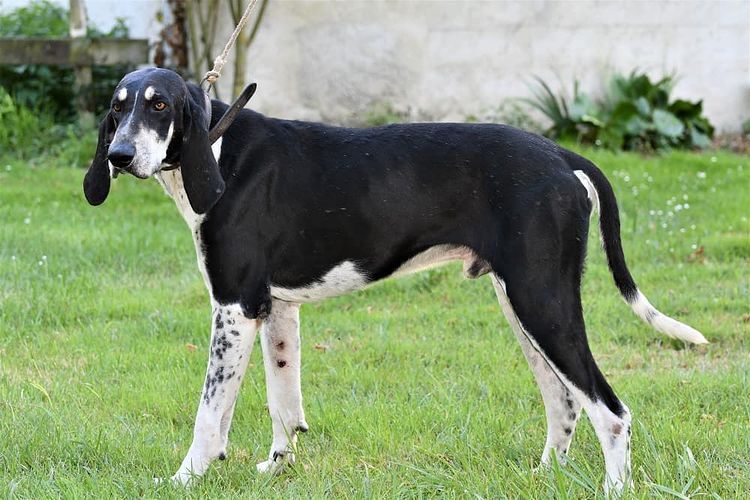
Grand Anglo-Français Blanc et Noir, also known as Great Anglo-French White and Black Hound, was developed by breeding French scent hounds with the English Foxhound. The result is a black and white thing of strength and beauty that is known for its speed, focus, and excellent scent tracking skills.
These dogs are very rare outside France. They are also not commonly kept as pets due to their stubborn nature and their obvious disdain for confinement indoors.
1. Griffon Nivernais
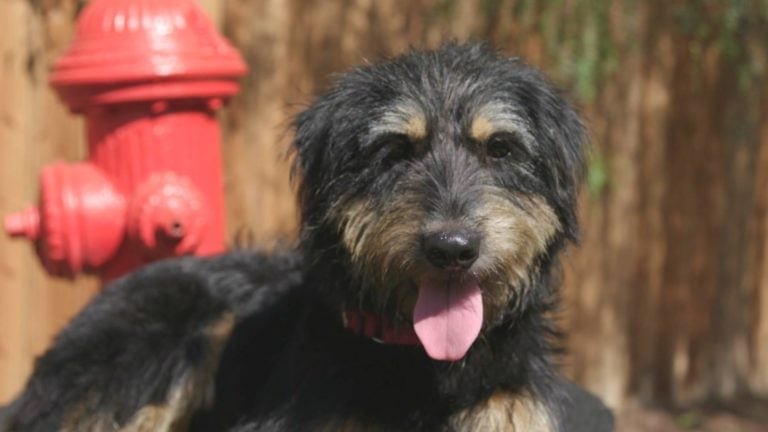
The Griffon Nivernais has always been a team player and this shows even when they are not being used in hunting fields. They get along very well with people and do not take too long to warm up to strangers.
They were kept as scent trackers and their one-track minds made them very effective at their job. However, as we have seen this makes dogs very hard to train and control so a lot of patience is needed on the part of the owner.
Related Questions
What Makes A Dog A Hound?
The key defining features that make a dog a hound are either an excellent sense of smell, incredible speed, or even both. It could also be a combination of other features that made them useful as hunting assistants for both small and large prey. This includes resilience and focus in chasing prey or even great eyesight.
Is A Hound A Good Family Dog?
Most hound dog breeds are actually very good family dogs. They tend to get along very well with children and even strangers as they were very used to working closely with human beings. However, socialization and obedience training should be started early to avoid later incidences. They also need a lot of exercises.
Are Hound Dogs Easy To Train?
Many hound dogs may be a little difficult to train. Despite the fact that they tend to be very intelligent, a lot of them have a one-track mindset that makes it difficult to control their attention. To make your life easier, use treats to get their attention and keep the training sessions short.

